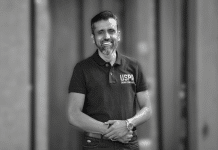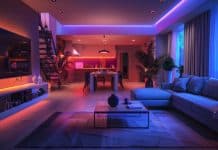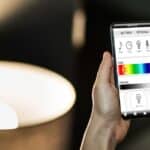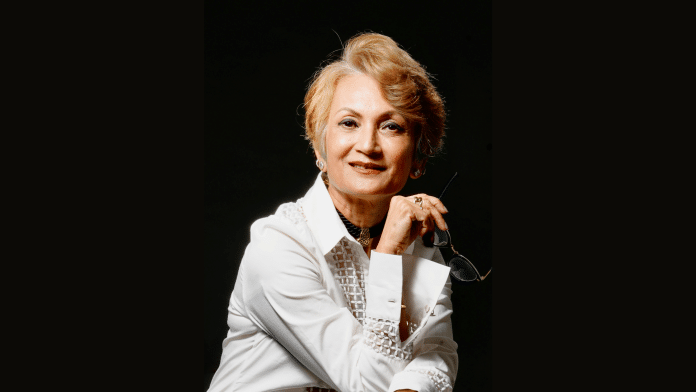
Over the years, Sonali Bhagwati, Founder and Principal Architect, DPA has transformed the design landscape with her distinctive approach — one that combines craftsmanship with cutting-edge innovation. Her projects, from luxurious residences to immersive penthouses, showcase how smart lighting, home automation, and digital security can elevate the ambience and functionality of modern living. Here, she discusses the evolution of her practice and why technology has become an invisible yet essential design layer.
Tell us about your design journey and some of the landmark projects that have set trends over the years.
Our practice has always been rooted in the belief that design is not just about aesthetics, but about shaping experiences. Over the years, we’ve worked on projects ranging from intimate residences to large-scale commercial and hospitality spaces, but the ones that stand out are those where art, design, and technology converge seamlessly. Projects like The Crest demonstrate how a home can be reimagined into layered, experiential spaces where every corner tells a story. Another milestone has been creating residences that blur the boundary between indoors and outdoors, spaces where natural textures and carefully designed lighting play as important a role as the architecture itself.

How has smart technology influenced your approach to architectural and interior design projects?
Smart technology has shifted design from being static to responsive. Earlier, the focus was on form, material, and proportion. Today, with automation and adaptive lighting, the spaces themselves evolve with the rhythm of daily life. Technology has become an invisible design layer, enhancing comfort, efficiency, and security without taking away from the emotional and sensory quality of the interiors.
At what stage of a project do you usually start considering technology integration, and how early do you involve system integrators or consultants?

Technology is never an afterthought. We start discussing it as early as the planning stage, when we’re mapping circulation, natural light, and the overall layout. System integrators are usually brought in alongside MEP consultants, ensuring wiring, concealment, and zoning are accounted for before construction begins. This way, the integration feels organic, not forced.
What’s the biggest challenge in balancing aesthetics with technology, especially when it comes to concealing devices or avoiding visual clutter?
The challenge lies in ensuring technology enhances, rather than disrupts, the design language. Devices can easily overwhelm a space if they aren’t considered early. We often create custom cabinetry, recessed niches, or multi-functional surfaces that absorb these elements seamlessly. In The Crest, for example, the sealed staircase base doubles as both storage and a design element; it shows how functional interventions can still be visually elegant.

What benefits do automation, smart lighting, and smart security solutions (like cameras and digital locks) bring to your projects?
They simplify living. With automation, one can shift from day mode to evening mode with a single scene change. Smart lighting accentuates textures, artwork, and furniture while also saving energy. Security solutions give residents peace of mind, especially in urban environments where safety is paramount. Together, they free the occupant to focus on enjoying the space rather than managing it.
Which brands do you prefer or trust most when it comes to building automation, smart lighting, and smart security?
We don’t subscribe to a one-size-fits-all solution. Depending on scale and client preference, we’ve worked with systems like Lutron for lighting control, Crestron for whole-home automation, and Yale or Godrej for smart locks. What matters most is reliability, service, and how intuitively the system integrates into daily life.
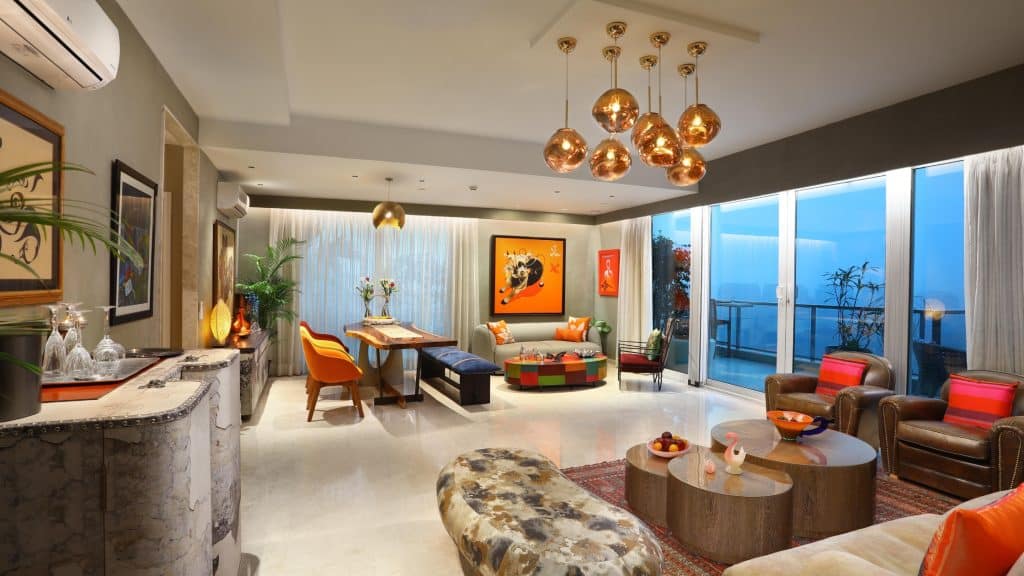
Could you share a case study where you’ve integrated automation, smart technology, and smart lighting?
The Crest is a strong example. This penthouse was designed as a series of “micro moments” where furniture, lighting, and art create layers of drama. Smart lighting played a pivotal role here. Architectural lighting was integrated to highlight natural textures, while decorative fixtures were automated to create mood-driven settings. Automated blinds manage natural light throughout the day, reducing energy use and protecting sensitive artworks. Security is handled through discreet digital locks and camera systems, all networked into a central platform. What makes it successful is that none of this feels obtrusive. Visitors notice the art, the textures, and the sense of calm, but the underlying technology is what makes the experience seamless. Its design and tech work in harmony rather than in competition.
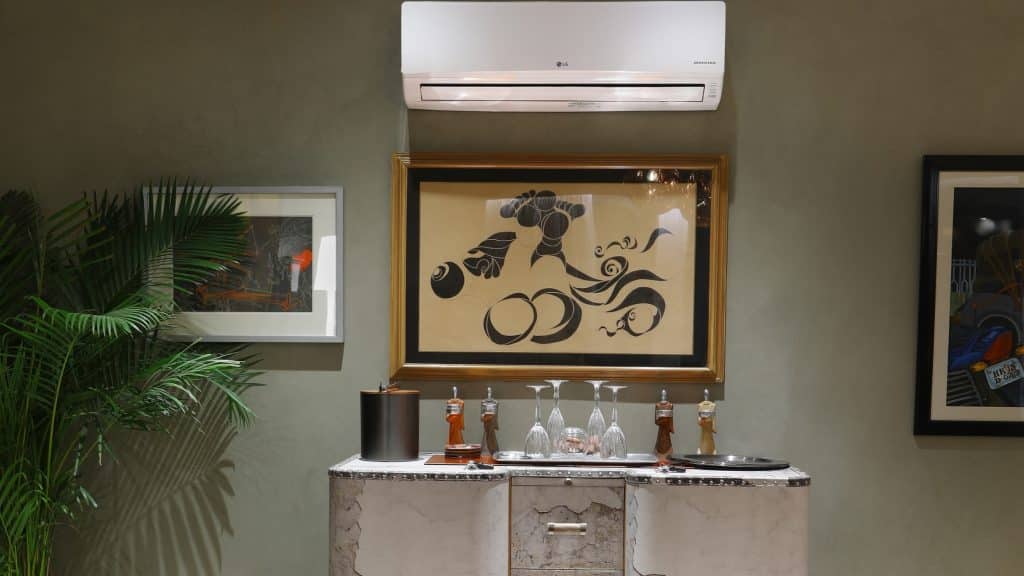

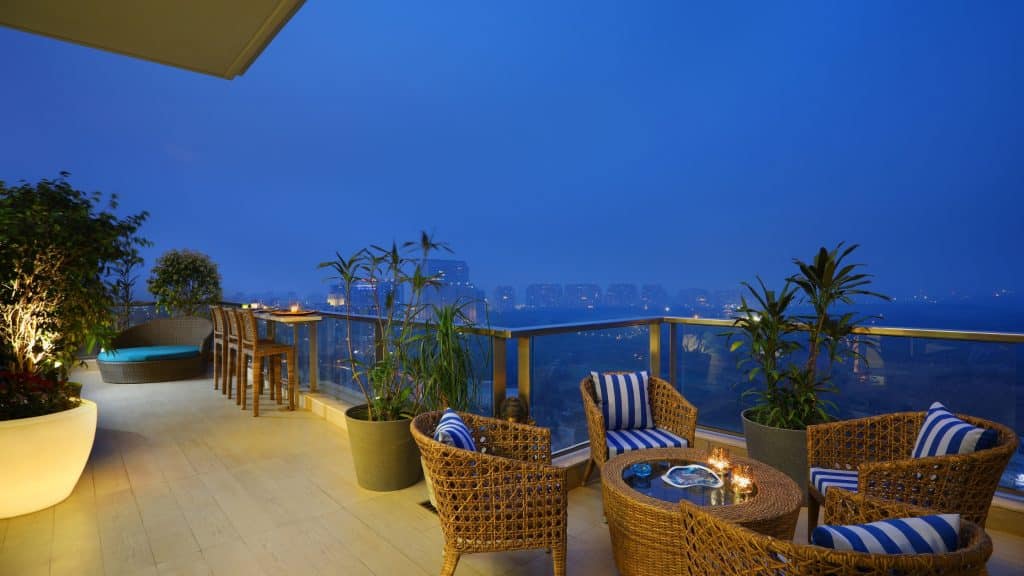
As homes continue to get smarter, how do you see the role of architects and designers evolving? Do you think tech fluency will become an essential skill set in your profession?
Absolutely. Just as architects once had to understand structural systems or lighting design, technology is now a core part of the vocabulary. Our role is to ensure that smart systems don’t just function but also elevate the emotional quality of a space. That requires fluency in both design and tech. I believe the next generation of architects and designers will need to be as comfortable discussing app-based interfaces as they are discussing marble finishes




